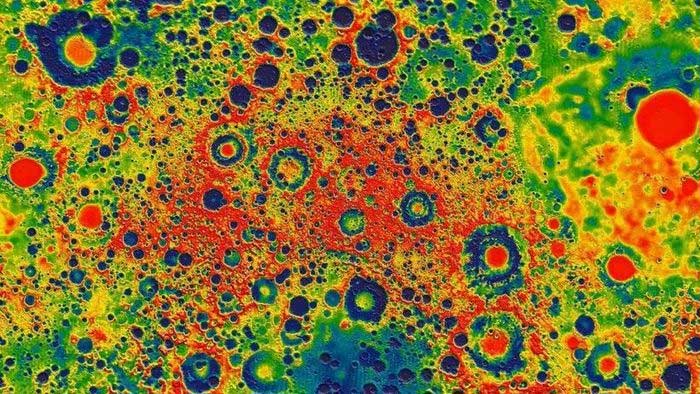Scientists have discovered an anomalous thermal spot on the far side of the Moon.
According to a new study, this mysterious hotspot has a peculiar origin. It is likely due to natural radiation emitted from a massive granite rock buried deep beneath the surface, which is rarely found in large quantities outside Earth. On the Moon, a volcano that has not erupted in 3.5 billion years may be the source of this unusual granite.

Map image of the Moon.
The lead author of the study, Matt Siegler from the Planetary Science Institute in Tucson, Arizona, stated: “This resembles Earth more than we imagined. These features could also form on the Moon – which lacks water and plate tectonics that help granite form on Earth.”
Siegler and his colleague Rita Economos from Southern Methodist University discovered the thermal spot using a new method. They utilized microwaves to measure subsurface temperatures through China’s Chang’E 1 and 2 lunar orbiters. The scientists also used data from NASA’s Lunar Reconnaissance Orbiter and Lunar Surveyor.
What they found was an area about 31 miles (50 km) wide with temperatures approximately 18 degrees Fahrenheit (10 degrees Celsius) warmer than the surrounding environment. This area lies beneath a point with a diameter of 12.4 miles (20 km) on a silicon-rich surface, believed to be a collapsed volcanic crater.
This volcano last erupted 3.5 billion years ago. However, magma from its plumbing system may still lie beneath the surface, emitting radiation.
“This discovery is a rock 50 km wide. This is a type of volcanic rock that forms when magma rises beneath the Earth’s crust but does not erupt onto the surface. El Capitan and Half Dome in Yosemite, California, are examples of similar granite that have emerged to the surface,” researcher Economos mentioned in a statement.
The researchers reported these findings in the journal Nature on July 5. They then presented their details on July 12 at the Goldschmidt Conference on Geochemistry in Lyon, France.
Stephen M. Elardo, a geochemist at the University of Florida who was not involved in the study, remarked that these findings are “extremely intriguing.” He added that granite is extremely common on Earth, but not in other places in the Solar System.


















































